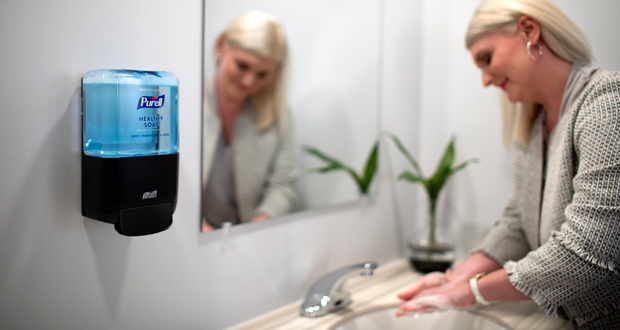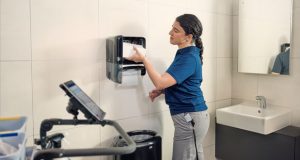Chris Wakefield, Managing Director UK & Ireland, GOJO Industries-Europe Ltd. offers advice on how to uphold high standards of hygiene amidst rising costs
Expectations of cleanliness and hygiene remain high across all sectors – and rightly so, especially as levels of interaction increase. People are returning to their workplaces, not only mixing in the office, but on public transport. The summer holidays are imminent, during which time leisure and retail facilities see an upturn in footfall. And with no formal restrictions in place, every organisation must take some responsibility to prevent the spread of infection.
It’s not only the right thing to do, but it makes sense from a business perspective. Keeping facilities clean and providing ample opportunities for hand hygiene actively help keep the workforce healthy and lower rates of absenteeism.
For customer-facing environments, ensuring high standards of cleanliness demonstrates that you care about your staff and clientele – and can have a direct impact on referrals. And no more so than in the humble washroom. According to YouGov, 85 per cent of customers surveyed said they would advise others against visiting a restaurant if washrooms did not meet the standards of hygiene and cleanliness.
So it really does pay to invest in effective cleaning and hygiene. However, the cost of living crisis is undoubtedly squeezing businesses’ finances. Escalating energy prices, as well as rising costs of raw materials that are, in turn, increasing product prices, mean that organisations are having to slash budgets and make them work harder.
A false economy
Low-cost solutions are not really solutions at all – and in fact, could end up costing you more in the long run. The Cleaning & Hygiene Suppliers Association (CHSA) recently warned that, against the backdrop of the rising cost of raw materials and energy, those reducing prices are likely to be compromising on product quality and quantity.
For example, the quantity may not meet the stated amount, meaning you have paid for more than you have received, the quality is substandard, which may mean more product is required per use. It may not kill germs effectively either, which can lead to higher levels of infection and days lost to staff sickness.
Therefore, always make sure that you purchase from a trusted supplier, such as those accredited by the CHSA, like GOJO. This provides assurance that what you are buying is high quality and fit for purpose, meets industry standards, and matches the exact quantity promised on the packaging. Looking at the bigger picture, rather than financials alone, can help businesses make responsible purchases.
Be creative
When budgets are tight, think creatively. How can you maximise the resources you already have available? Can you support any of your other business goals at the same time?
One way is to opt for time-saving solutions. For example, the AT-A-GLANCE refills on the PURELL® ES range of soap and sanitiser dispensers enable staff to check product levels quickly and easily, without having to open each dispenser individually. This saves time, meaning cleaning operatives can cover more ground within their shift to keep facilities cleaner. Similarly, the PURELL® range of surface sanitising products are rinse-free, so cleaning a surface takes only one pass, thereby reducing labour costs accordingly.
Sustainability goals can also be impacted in times of financial hardship as customers make the trade-off between affordability and environmentally friendly products, which are often priced at a premium.
However, it is possible to strike the balance on a budget. The industry has made great strides in developing more sustainable products and supplies over the years. For example, PURELL HEALTHY SOAP™ rinses fast and clean, saving an average of 22 litres of water per refill1. This not only helps organisations to meet their green goals, but can also help lower their water bill too – win-win!
The current budget pressures are not going anywhere fast. However, when it comes to cleanliness and hygiene, businesses simply cannot afford to cut corners – or they will risk illness, absenteeism, and, potentially, loss of custom. The key to survival is to look at the bigger picture and think about how your purchasing decisions can support other business goals or add long-term value.





